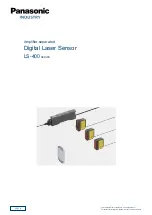
cod. F07011388
cm 35
fi
g.97
fi
g.98
fi
g.99
MAX km/h 8
fi
g.100
USE AND MAINTENANCE
ENGLISH
EN - 81
DANGER
Stones or other sharp objects may be thrown up by the turn-
ing tines during the soil working phase.f±lways constantly
check that there are no persons, children or domestic animals
in the
fi
eld of action of the machine. The operator must also
pay attention to the above.
4.18 TROUBLESHOOTING HINTS FOR THE
TRACTOR OPERATOR/DRIVER
Insuf
fi
cient depth
a) Check the adjustment and position of the roller or depth skids.
b) Advance more slowly. The tractor power may be insuf
fi
cient.
c) Further runs will be required if the soil is too hard.
d) The tines rub along the soil instead of penetrating it. Advance
more slowly.
Excessively crumbled soil
a) Lower the speed of the tine rotors.
b) Increase the advancement speed.
Insuf
fi
ciently crumbled soil
a) Increase the speed of the tine rotors.
b) Reduce the advancement speed.
c) Do not work in excessively wet soils.
d) If the machines has a levelling bar, lower or raise this in order
to keep the clods near the tines.
Clogged rotors
a) Excessively wet soil.
b) Lift the levelling bar.
c) Lower the advancement speed.
The machine jumps over the soil or vibrates
a) Foreign bodies locked between the tines.
b) Incorrectly mounted tines, or the blunt edges of the tines pen-
etrating the soil
fi
rst.
c) Worn or broken tines.
Other faults
The machine fails to work at the same depth along its entire width.
For example, it works too deeply on the right-hand side. Shorten
the right lift link and check the position adjustment of the right-hand
skid or roller and the position of the levelling bar.
Working on slopes
If possible, proceed by ascending up the slope. If this is not possi-
ble, avoid working along the sides of the slope. Operate downwards
in order to reduce the terrace effect.
4.19 PARKING
WARNING
Comply with the following indications to ensure stability when
the machine is detached from the tractor
:
1) Check that the machine is stored on a suitable surface.
Position the support foot
2) Support the cardan shaft on its relative stand.
















































